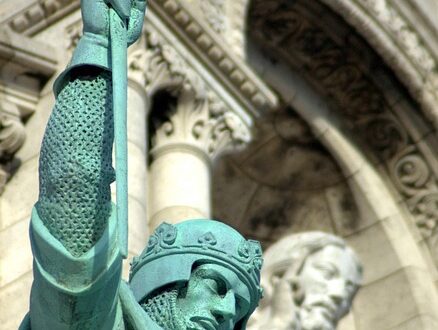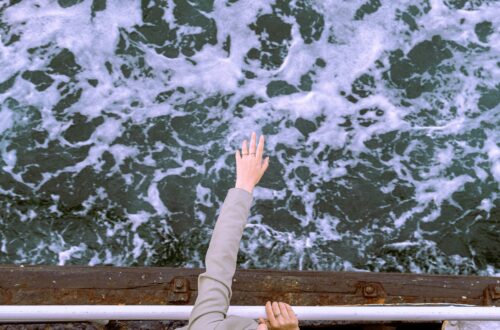The 18th century is known as the “golden age of piracy.” It is not unusual to see Pirate ships roaming the Atlantic Ocean and along the coast of North America while plundering busy commercial ports in the West Indies. Due to its shallow inlets, the North Carolina Outer Banks became a sanctuary for many pirates around the 1700s and 1800s. One of the most notorious pirates was Edward Teach, known as Blackbeard. Blackbeard, although born in Bristol according to historical records, made North Carolina his home, where he plundered and pillaged unsuspecting ships off the banks of North Carolina. There’s very little known about Blackbeard’s early life apart from the fact that he served as a privateer during Queen Anne’s War between 1701 and 1714. Privateering was not entirely illegal; the British Government authorized private ships to attack enemy commercial vessels. The proceeds from these expenditures were regularly shared between the queen and the crew of the pirate. After the war, this practice ended, and Teach was faced with the potential loss of his livelihood and the sense of thrills and adventure it offered. Together with several others in the same position, Teach turned to Piracy. For several years, Teach served under a captain known as Benjamin Hornigold, one of the most notorious pirates. Benjamin and his crew members preyed upon commercial ships throughout the Caribbean. Around 1717, Hornigold’s crew commandeered a French slave ship, and Blackbeard was placed in charge of the stolen vessel. The boat was renamed the Queen Anne’s Revenge, and Blackbeard became the ship’s new pirate captain. Blackbeard customized his new ship to his liking and increased its armament from the original fourteen guns to forty. His expeditions earned him a reputation as a ruthless pirate. He ambushed and terrorized sailors, their passengers, and cargo ships in the dim light of the dawn. Most times, crew members and captains laid down their arms without fighting. Blackbeard instilled fear all around him, and this period became known as the Reign of Fear of Blackbeard.
Blackbeard and his crew attacked and captured several valuable vessels off the coasts of Carolinas and Virginia. Buoyed by these victories, Blackbeard confidently sailed into South Carolina and Charleston, captured several prominent citizens, and kept them hostages until the city agreed to give them money, food, and medical supplies. Blackbeard reputation spread fast as he continued terrorizing commercial ports along the coast of North America. He was widely known for his violence and brutality. Blackbeard cultivated a fierce appearance to terrify his opponents further. He grew his beard to an extravagant length, then twisted it with ribbons. In the time of action, he wore a sling over his shoulders, holstering three Brace of Pistols, with stuck lighted Matches hanging under his Hat, both appearing on each side of his face. The slow-burning matches or hemp billowed smoke around his face. He wore a crimson coat and always carried two swords on his waist while stuffing his pockets with knives and pistols. Blackbeard made North Carolina his home and often returned after his expenditures. The Inlets were shallow and, as such, provided a famous hiding place for Blackbeard and his crew where they rested and repaired their ships. It was rumored that he had a house in Ocracoke village. By May 1718, Blackbeard had grown his crew to about 300 hundred pirates and had come to own several ships. At some point, Blackbeard surprisingly surrendered himself to the North Carolina Governor under the promise that he would deviate from his piracy lifestyle. Blackbeard took a reputation as a family man and got himself his fourteenth wife from Bath, North Carolina, where he lived for a while.
However, his new lifestyle did not last long. Soon, Blackbeard took up Piracy again to support his extravagant lifestyle, this time hiding out in the inlets of the Outer Banks of North Carolina. Although Blackbeard terrified people from the neighboring colonies, North Carolinians bought goods from him at discounted prices. These goods were stolen from ships. The governor, customs collector, and the colonial secretary all had their share in Blackbeard’s spoils in exchange for asylum and protection.
The people of North Carolina became increasingly frustrated with seeing their ships pillaged and goods stolen, and the inability of their Government to act, turned to the governor of Virginia for help. Governor Alexander Spotswood of Virginia gathered a crew of British Naval officers, led by Lieutenant Robert Maynard, and sent them to go against Blackbeard. The militia went to Ocracoke Inlet, Blackbeard’s known hiding place. Lieutenant Maynard sailed with two well-equipped ships prepared to challenge the pirate king. A brutal fight began at dawn on November 22, 1718. Maynard approached Blackbeard’s hiding place in the shallow inlet, but regrettably for Maynard’s crew, Blackbeard and his crew members were familiar with the inlet, and with tactical maneuvering, they led Maynard’s ship to a shallow sandbar where it ran aground. Blackbeard quickly commanded his crew to board Maynard’s ship, presuming everyone was dead. Unknown to Blackbeard, Maynard had hidden his surviving crew at the belly of the vessel, waiting patiently for an opportunity to ambush and attack Blackbeard. Right on time, Maynard’s naval fleet attacked Blackbeard, who was wounded several times, including five gunshot wounds. All of Blackbeard’s surviving crew was either taken prisoner or killed. Maynard cut off Blackbeard’s head and displayed it on his ship to deter others. The Reign of Blackbeard the pirate was finally over, and the colonies surrounding North Carolina all breathed a sigh of relief. Blackbeard was America’s most wanted, and he had to be stopped.




